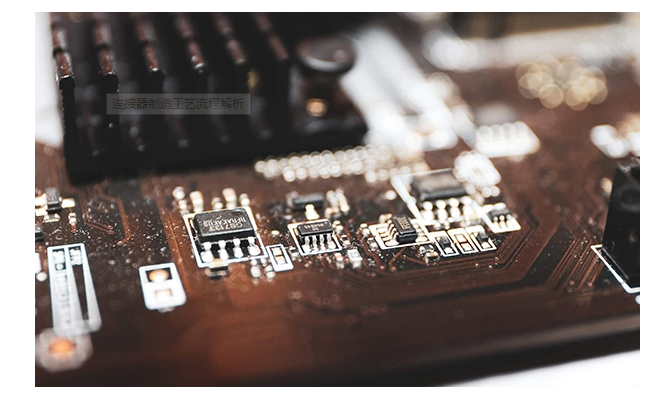Connector is one of the important components in electronic products, which is an important interface for connecting various electronic devices such as circuit boards, power supplies, and appliances to each other. The manufacturing process of connectors involves multiple links, including design, material selection, processing, assembly, and testing. This article will introduce the process flow and related manufacturing processes of connector manufacturing.
Connector manufacturing process flow
Stores reserve
The manufacturing of connectors requires a large amount of material support, including plastics, metals, electrode alloys, copper alloys, etc. At the beginning of the connector manufacturing process, these materials need to be prepared in advance.
Raw material processing
Next, the material needs to be processed, such as forming and welding metal materials, while plastic materials require injection molding, spraying, and other processes.
Part processing
Connectors are mainly composed of components such as connectors, sockets, shells, and shrapnel. These components require a series of processes such as drilling, milling, cutting, polishing, etc. during the processing process to assemble into the final connector product.
Assembling
After the parts of the connector are processed, they need to be assembled. This process requires assembling the parts one by one according to the instructions on the drawing. In addition, when connectors require waterproofing treatment, specialized waterproofing treatment processes are also required.
Testing
During the production process, connectors need to undergo multiple stages of testing, including material testing, processing testing, assembly testing, etc. These testing steps include multiple aspects such as electrical performance testing and mechanical performance testing.
Packing
Finally, the connector product after testing needs to be packaged and labeled, and then it will be sorted, stored, transported, and finally delivered to the customer's hands.

Manufacturing process
Injection molding
The plastic components in connectors are usually processed through injection molding technology, where the plastic is melted and injected into a steel mold for molding.
Metal stamping
Most metal parts in connectors need to be formed through metal stamping technology, using large punches and molds to punch the metal sheet into the shape of the required components.
Welding
Some electrode alloys in connectors require special welding processes due to their unique properties. Small components such as joints require manual electrode welding, while larger and thicker metal components typically require automation through equipment such as carbon arc welding or gas shielded welding.
Surface treatment
In order to enhance the corrosion resistance and aesthetics of connector products, surface treatment is usually required in the connector manufacturing process. For example, electrophoresis and anodizing not only enhance the corrosion resistance of metal surfaces, but also have good decorative effects.
The manufacturing process of connectors is very complex, including multiple links such as material preparation, raw material processing, part processing, assembly, testing, and packaging

